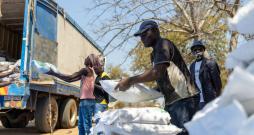A new way to grow
From Asia to Latin America, MCC and its partners are helping farmers experiment with simple, affordable methods that they can use to increase harvests and provide for their families.
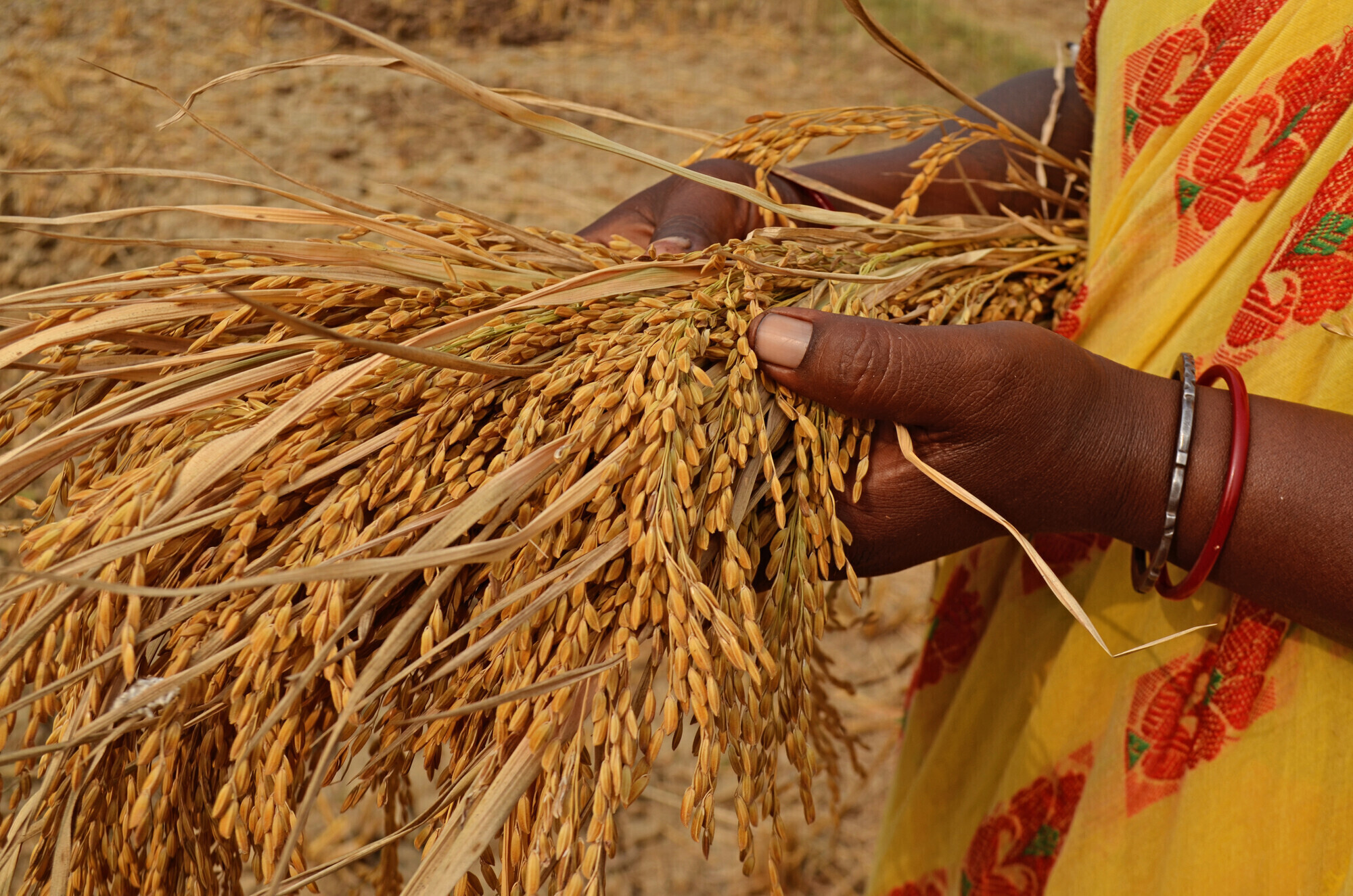
The year was 2009, and Pabitra Paramanya, a young agriculturalist in West Bengal, India, had a hard sell.
He had just started work with MCC partner Asansol Burdwan Seva Kendra (ABSK), a service organization of the Catholic Diocese of Asansol.
And ABSK leaders were eager to introduce a new system for cultivating rice.
But rice has been a staple crop for thousands of years in India. Farmers were little interested in hearing about a new system — especially one that involved planting fewer seedlings and drying out young rice plants rather than flooding them like their ancestors had.
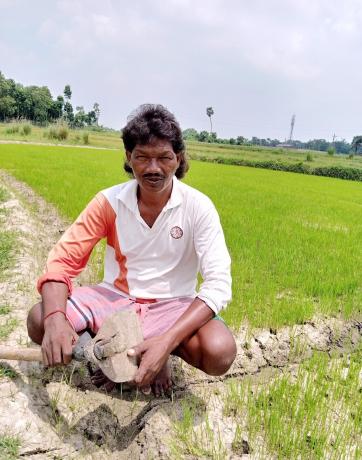
People laughed at him. They made mocking comments in village meetings. “Many times I heard, ‘You don’t know anything about rice farming,’” he recalls.
Paramanya had studied the new System of Rice Intensification (SRI) that ABSK and MCC were promoting. Initially surprised by how different the system was himself, he ran field trials and became convinced it could help.
But even the farmers willing to try other ABSK techniques, like crop diversification, were adamant that SRI wouldn’t work.
Eventually, in 2010, Paramanya found one person, Hopna Murmu, who — though he argued against the method — was willing to try SRI on one small plot.
The day Murmu began transplanting rice using the new system, putting only one seedling in every 10-by-10-inch square, his neighbors were standing by teasing him, Paramanya remembers. Murmu’s wife, Hupni Murmu, followed behind trying to put in additional seedlings, until Paramanya finally told her he’d reimburse the costs if the new system failed.
Yet 20 days later, it was Murmu who had reason to smile.
His plants were growing faster than he’d thought they could. They had caught up to the size of rice seedlings in an adjacent field that had been transplanted two weeks earlier than his.
Overcoming his own skepticism, Murmu continued to follow SRI, letting the young plants dry out in order for their roots to grow deeper.
It paid off. More rice formed on each individual seedling, and his harvest for the plot was 35% higher than before.
But that’s not all. The process spread — to five farmers the next year and then to 21 the year after that. The neighbors who teased Murmu as he transplanted that first field now use SRI themselves.
Within five years, hundreds of farmers in the region were planting rice using the system. By 2020, some 1,600 farmers were using the system, and Paramanya continues to hear reports of increased yields and how SRI is changing families’ lives.
1
"Within five years, hundreds of farmers were planting rice using the system. That grew to some 1,600 farmers by 2020."
Around the world, MCC and its partners are helping farmers like these in India experiment with new ideas and approaches they can use to increase yields, nurture soil and earn more to support their families.
And this effort becomes even more vital as farmers grapple with the changes in rainfall and more frequent and severe weather that climate change has brought.
For instance, in Haiti, farmers are seeing hurricanes and tropical storms that are bigger, move more slowly and create more rainfall. That is devastating even far from the coast — heavy rain is washing away the soil of steep mountainside gardens, killing entire crops.

In response, MCC partner Konbit Peyizan pou Ranfòsman Kapasite Lokal, whose name means Agricultural Collective for the Reinforcement of Local Capacity, is encouraging farmers like Roseline Lucien to plant agroforestry gardens. In addition to food crops, these gardens include trees and other plants with deep roots that will hold the soil in place. Moringa, sugarcane and plantain trees are often planted behind soil conservation structures to help preserve them. The avocado, mango and forest trees create shade, so water penetrates the soil more easily and nourishes nearby plants. Both trees and plants grow better together and are more able to resist effects of climate change.
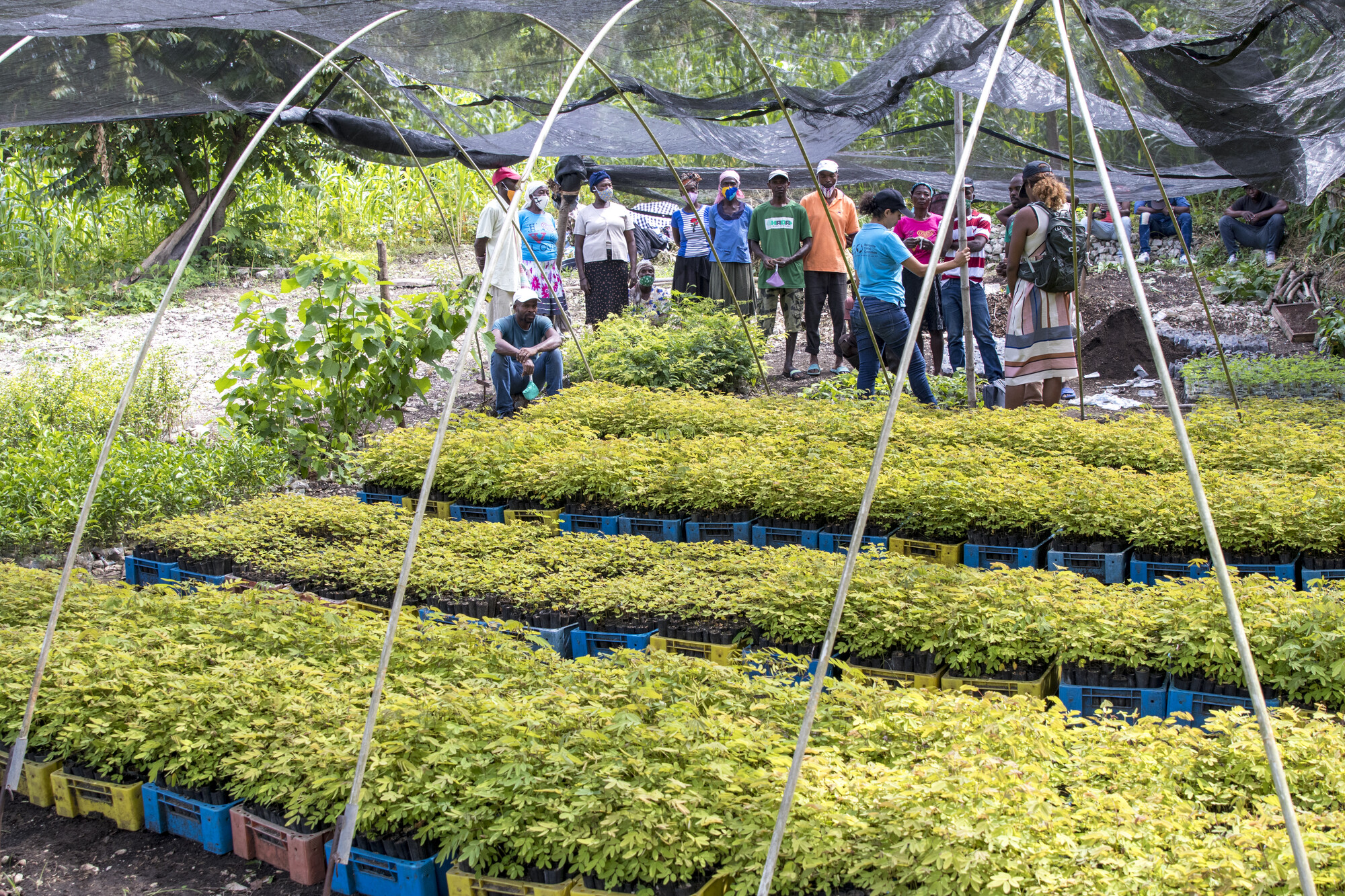
Farmers know the many challenges they face. What MCC projects and partners can offer is a way to step back and assess what steps, even if they’re small, could help.
“Where are the opportunities to do better?” says Allison Enns, a food security and livelihoods coordinator for MCC. “People have the skills, have the knowledge, but it’s just helping them get to that next step.”
With the approaches MCC promotes, farmers might need some materials or inputs to get started. But in general, Enns notes, these are available locally, and the emphasis is on methods that give farmers solutions they can try even with few resources.
“It’s about what you can use on your land without being reliant on having to buy (supplies) in the market every year,” Enns says.
So, in Colombia, in communities where farmers have usually relied on buying chemical fertilizers, MCC partner Sembrandopaz, whose name means “sowing peace,” promotes a different approach.
Through the support from both MCC and U.S.-based organization Growing Hope Globally, Sembrandopaz trains farmers in a variety of agriculture techniques, including organic pest control.
One method involves plucking 11 pounds of leaves from a neem tree, adding water and steeping for 30 days. The liquid, diluted with water, is sprayed onto plants to repel pests.
It might not sound like a recipe for success. Narciso Díaz Segura, who is part of the agricultural team at Sembrandopaz’s experimental farm just outside of Sincelejo, Colombia, says that at first farmers doubted the neem mixture would work.
Yet in time, he says, they saw what it could do and switched to using it instead of buying expensive chemical pesticides.
Some techniques are simple, like using string to measure the spacing of seeds for maximum growth, says Michael Adeola, also a food and livelihoods coordinator for MCC. “For a lot of farmers, it doesn’t cost anything to try it out and see what the benefits might be.”
Others are more complicated. In Nepal, Adeola says, MCC is helping farmers establish vermiculture, or worm composting — which, once begun, can offer high-quality fertilizer without ongoing purchases.
Like other approaches MCC and its partners employ, composting is only one aspect of a larger food project of MCC and Brethren in Community Welfare Society (BICWS), a ministry of the Brethren in Christ Church in Nepal.
For years, BICWS, with MCC support through Growing Hope Globally, has helped farmers improve agricultural techniques and have better access to markets.
In the process, BICWS staff are always on the lookout for assets or resources that a community hasn’t been able to tap into before.
In the Terai region, for instance, BICWS noted small ponds owned by local governments. They would fill with water during the rainy season and sometimes hold water through the year, but they rarely were used for anything.

With connections made by BICWS, local government representatives agreed to lease ponds to marginalized community members and to use the fees to pay for upgrades such as deepening the ponds.
BICWS and MCC then identified families interested in raising fish in these ponds and provided training and fish to get families started. Today farmers are finding that the ponds provide one more way to improve their income and provide extra protein for their families.
1
"People have the skills, have the knowledge, but it's just helping them get to that next step."
Sometimes, the newest innovation is to look back.
In areas of Uganda where drought and hunger are prevalent, MCC partner Dynamic Agro-pastoralist Development Organization (DADO) is encouraging farmers to consider traditional granaries.
The project is finding local artisans to build traditional family granaries, which used to be common but have fallen out of favor. The hut-like structures with wooden frames and thatched roofs work better than gunny sacks to protect the harvest from pests and mold and to keep it from drying out too much.
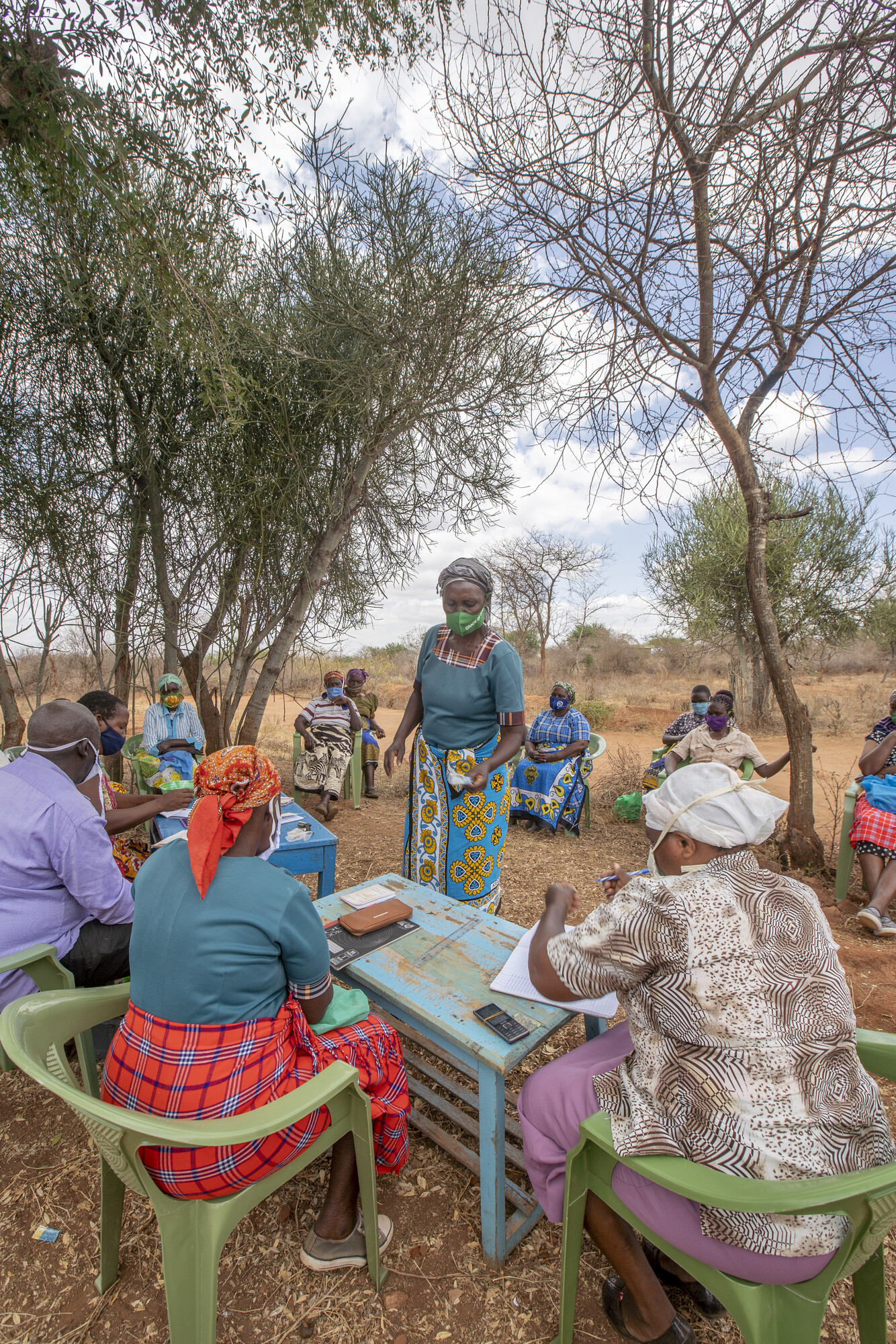
In Kenya, Adeola notes, partners are promoting airtight bags that help farmers protect their yields, giving them the choice to store their harvest and wait for more favorable prices rather than selling immediately. The one or two bags the project provides give farmers a risk-free way to try the technology, Adeola notes.
“Once they see the benefit, they become convinced to make small investments to buy them on their own,” he says.
Improving farmers’ prospects isn’t always about the crop itself, though.
Adeola and Enns both point to one additional ingredient that can multiply the economic potential of a farming community — working together.
In some cases, like in Rwanda, this means gathering to compost as a group rather than individually, Adeola says. In Cambodia, farmers are finding that they can negotiate better prices when they join together in cooperatives to buy agricultural supplies or sell what they have grown.
In Kenya and elsewhere, farmers are gathering in savings groups and contributing small amounts — usually the equivalent of a few dollars at a time. By joining efforts, though, they are providing loans that members can use for significant purchases.
Take Justus Wambua Mang’oka in Kwakavisi. After joining a local savings group facilitated by Utooni Development Organization, which MCC supports through its account at the Canadian Foodgrains Bank, he used a loan from the savings that group members had accumulated together to buy a tank to harvest rainwater.
Other loans helped him build an extension onto his house and buy goats whose offspring he can sell to supplement his other income from the farm.
Each of these represents a larger investment than many farmers could make on their own.
“They are able to pool more resources together,” Adeola says. “If they just had to save themselves, it might take six months or one year to save that money.”
These are changes that can last.
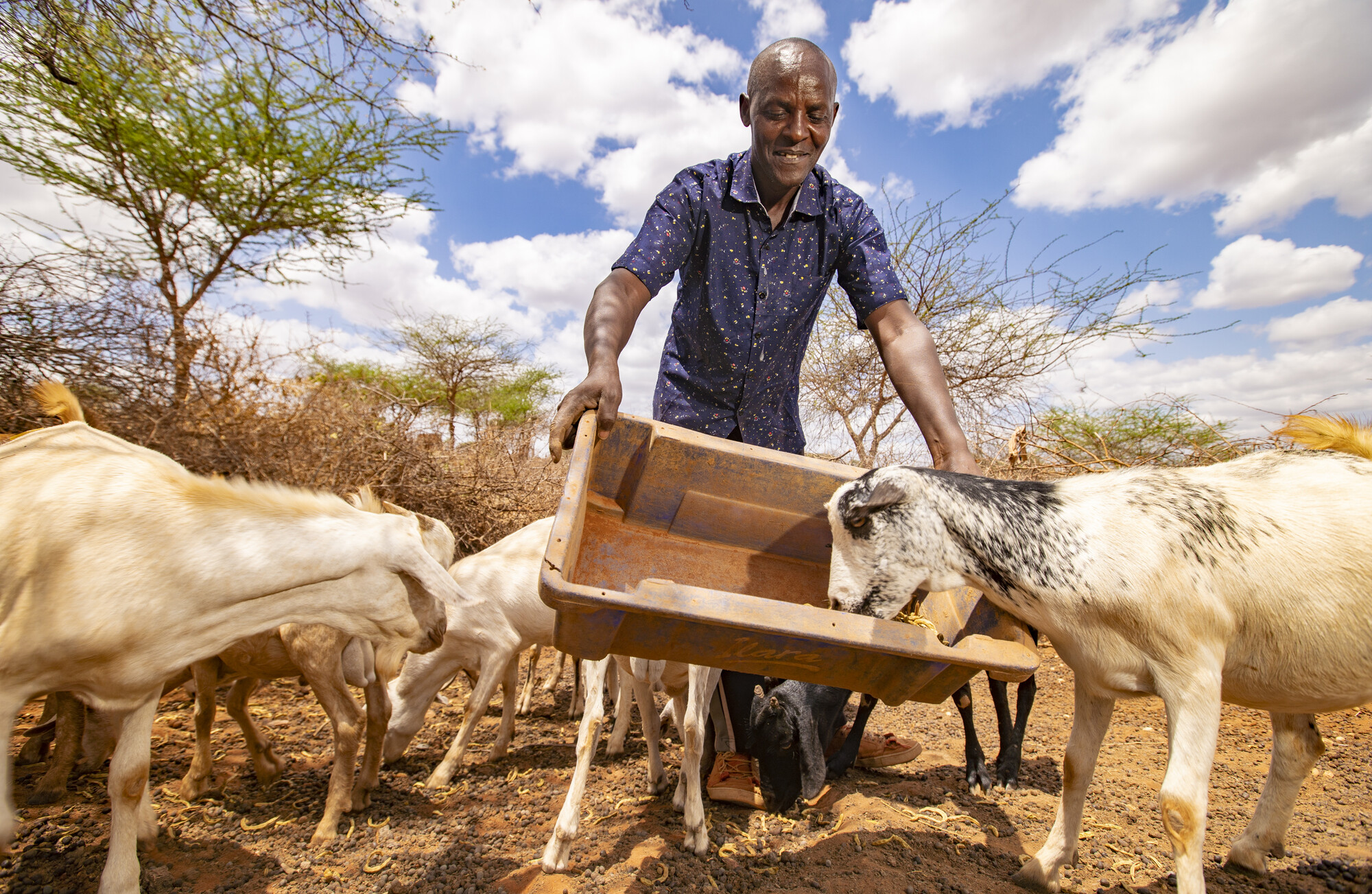
In India, after his first success with SRI, Hopna Murmu was sold on the system and has continued to use it.
The increases in his rice yield, even though he had little land, meant he was able to open a small shop. He bought two cows and a motorbike. He was able to invest more in his son’s education and buy him a computer — all gains he gives thanks to MCC and ABSK for helping him to make.
A few dollars, an organic pesticide, a bit more space for each rice seedling. On their own, they sound like small steps. But across the globe, MCC partners are seeing the changes add up. And they ripple out, transforming lives in ways that go far beyond farmers’ fields.
This story, compiled by Marla Pierson Lester, includes reporting from Colombia (Emma Gordan and Diana Castro), Haiti (Annalee Giesbrecht), Nepal (Luke Jantzi) and Uganda (Betty and Fred Bobo).
